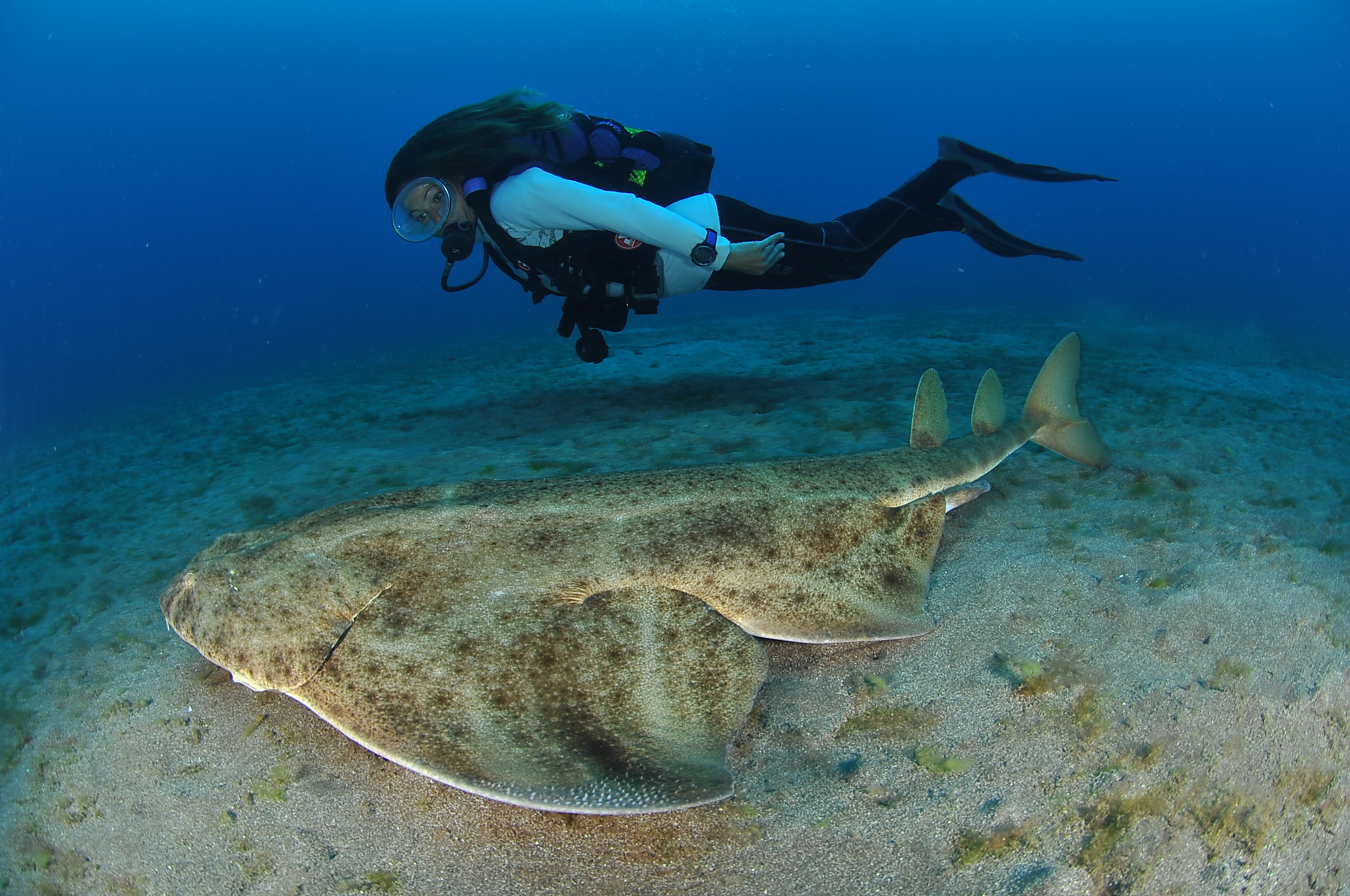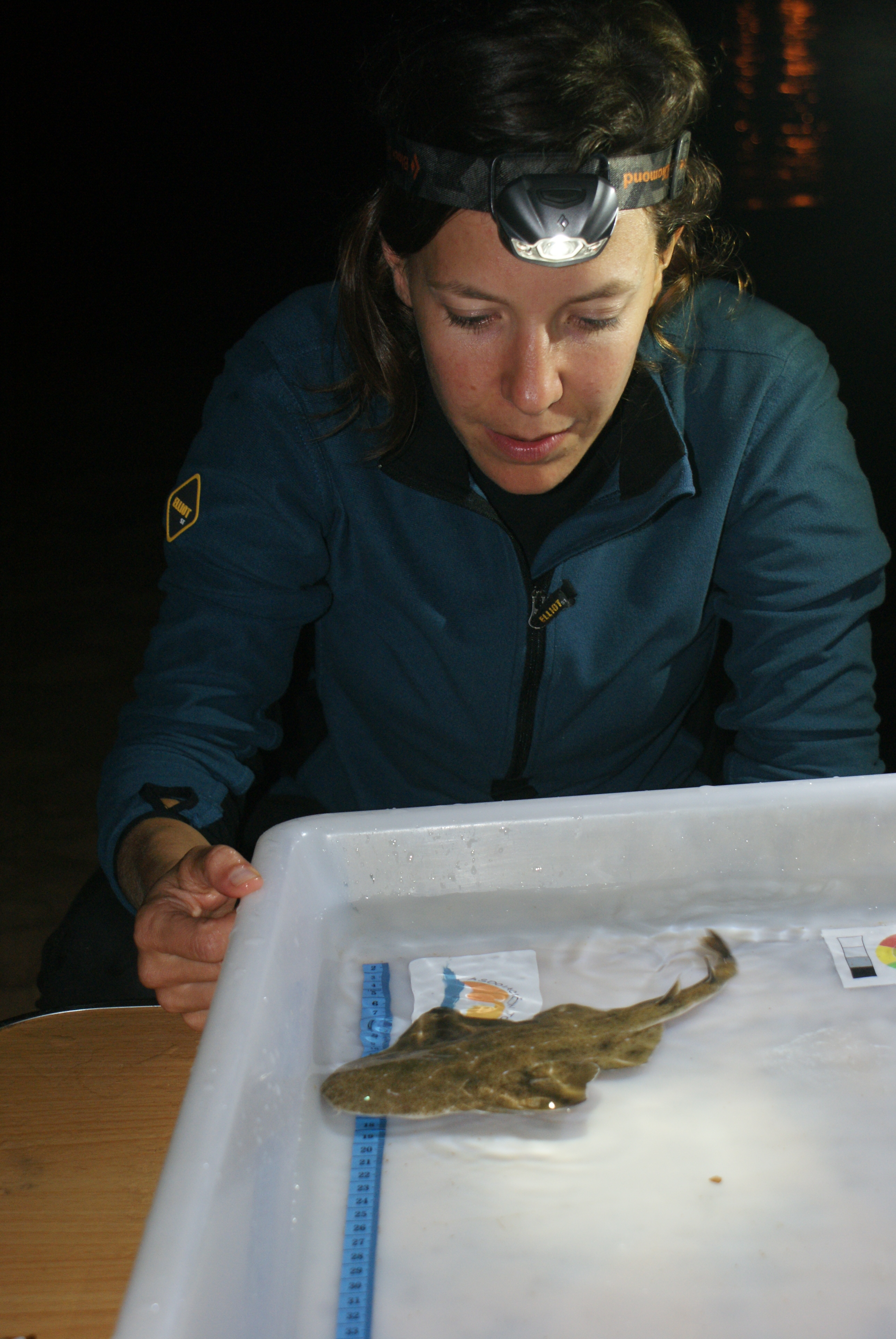Angel sharks protected in the Canary Islands
Angel shark populations have received full protection in the Canary Islands. Three species of angel shark: the Angelshark (Squatina squatina), as well as the sawback angelshark (S. aculeata) and smoothback angelshark (S. oculata) have been listed on the Spanish Endangered Species List for Canary Island waters. All three species are listed as Critically Endangered on the IUCN RedList of Threatened Species, and they have now been classed as “in danger of extinction” by the Spanish government.

Angel sharks aggregate at certain times of the year, particularly during the mating season. © Photo by Carlos Suarez | Océanos de Fuego
Project leader Eva Meyers is absolutely thrilled in the wake of this news: “We have been working together with our Angel Shark Project partners and the government for several years now, and this legislation has taken so long to come through. I had almost lost hope that it would ever actually happen, so when we finally got the news it was just such a big surprise. I feel very proud of this joint accomplishment, and relieved in some ways”.

A male angel shark in Lanzarote. Angel sharks can reach a total length of 2.5 metres. Photo by Carlos Suarez | © Océanos de Fuego
These protection measures come in addition to existing European Union (EU) regulations that manage S. squatina in EU waters. These fisheries measures prohibit targeting, landing, retaining or transhipping Angelsharks. Now, the Spanish Endangered Species List affords full protection that adds to these existing rules: no species on the list may be caught, killed, traded, exchanged or disturbed, and angel shark habitat may not be destroyed or allowed to deteriorate.

Photo © Carlos Suarez | Océanos de Fuego
Eva explains: “Getting Angelsharks protected in their unique stronghold, the Canary Islands, has long been a focus of the Angel Shark Project. It’s a key objective in the Angelshark Action Plan For the Canary Islands, something that was developed together with various stakeholders and partners, and the local government. Sure, the listing is only the first step, and it now means that action and implementation are required. We are still discovering basic information on Angelshark ecology and distribution, and we now need to ensure that the data we are generating through our projects will continue to help inform conservation and management of the species”.
And where does this lead for the longer-term conservation of Angelsharks and angel shark populations in the region? Eva is resolute:
It is now clear that Angelsharks are a protected species, and this status comes with obligations that will need to be fulfilled by the local government and industries. For example, I hope that in the future critical Angelshark habitats such as mating and breeding grounds will be taken into account for spatial protection.

Recaptured sharks that were tagged in the previous season are measured and weighed again to find out how much they have grown since they were tagged. © Photo by Angel Shark Project
